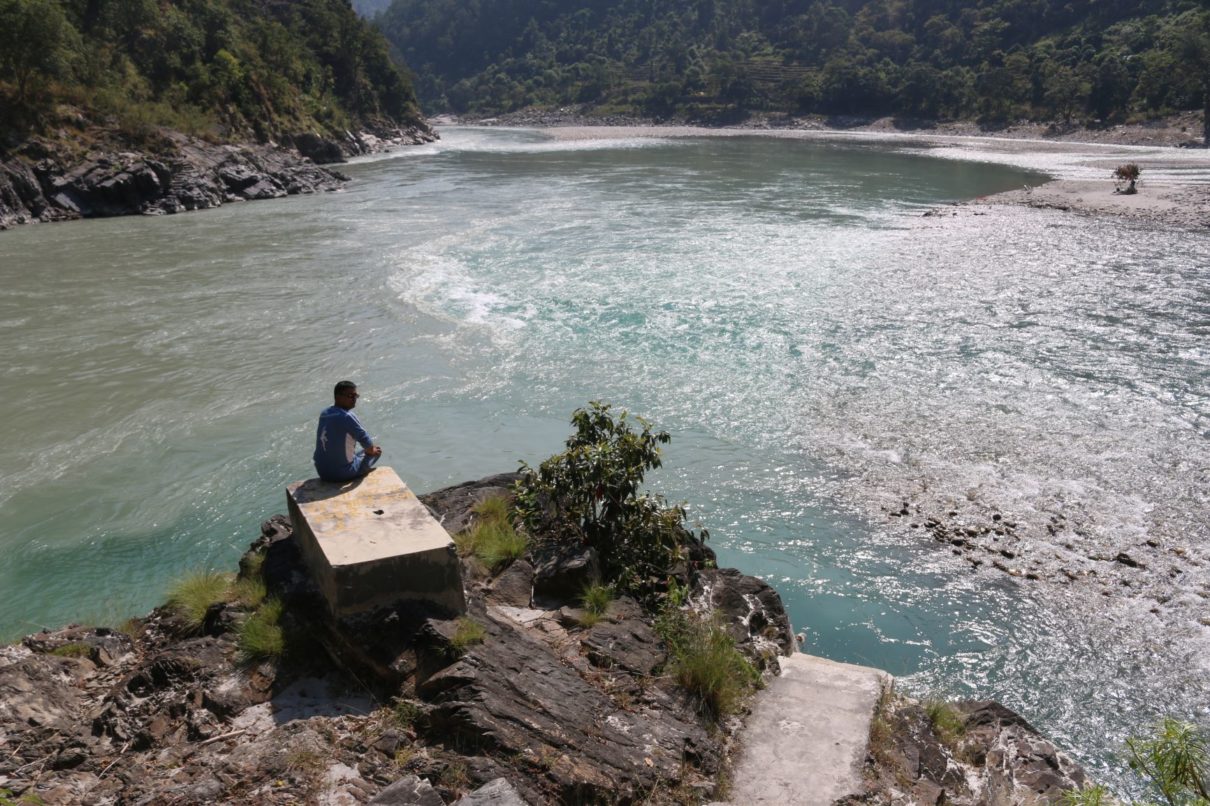When he embarked on his ambitious expedition on 1 April 2022, Mtb buffs still didn’t buy it and believed he would soon admit defeat.
The GHT is an epic 150-day trek that covers 1,700 km (1,056 miles), originating from the north of the Kanchenjunga Base Camp with the world’s third highest peak, Kanchenjunga (8,586 meters), towering over it. Classed as the world's highest trail, it traverses untamed wilderness with dangerous passes, glaciers, and Himalayan plateaus, culminating in Hilsa in mid-western Nepal in Humla. Given its demanding and punishing nature, most trekkers drop it without completing so much as half the route. Introduced in early 2000, barely 150 trekkers have thus far completed the GHT thru-hiking. Even for 37-year-old Mangal, a pro-biker-racer, an accredited Mtb tour guide, a bike mechanic, and 15 years of cycling behind him, a crack at GHT was an impossible bargain. And he knew it. To my question, what triggered off this daredevil idea, he said, “I wanted to break away from established norms—a feat no biker had ever done before. I longed to venture into the unridden highland wilderness, as isolated and wild as they could get—whatever it took. And GHT appeared as the ultimate.” Following months of planning, working out the logistics, the itinerary, and the knotty job of raising funds from sponsors, the expedition kicked off from the eastern frontier, the Kanchenjunga Base Camp, his branded Scott bike, dialed in for the harshest terrain. He could not, however, help shake off his misgivings about the mammoth challenge. Split up into eight sections, the trail from day one proved demanding with 60 percent unrideable sections. His backpack weighed a crippling 38kilos, plus his bike. Upon completing the first section from Kanchenjunga to Nun, he figured out it was twice as grueling as he had imagined—the rideable sections fraught with perilous drops into the bargain. The odds seemed stacked against him, riding and lugging the bike on his shoulder, struggling against the severest, most rugged, unforgiving terrain over 6000 meters—the uttermost desolate corners of the globe. Constant dramatic weather shifts with rain, fog, snow, and thinning oxygen levels put every ounce of his strength, grit, and endurance to the test—both physical and mental. Once, under heavy snow, he missed the trail; it took 12 agonizing hours to backtrack to the right course. Then disaster struck at West Col (6,190 meters) on the way to Baruntse Base Camp, Khumbu region. His porter, supposed to drop his backpack by a rope on a steep overhang with hardened blue ice, tried to cross on his own (without crampons). He lost his footing and nearly plummeted down a sheer drop. Thankfully, he let go of the pack and escaped unscathed by holding on to the belay rope. Mangal lost his cycling gear and other trappings, including stoves, butane canisters, sleeping bags, tents, and foodstuff. It devastated him. Stranded with no tent, sleeping bags, and no food, with temperatures dipping way below the sub-zero level, survival for Mangal became a dire issue. By a stroke of luck, he ran into a team of climbers and sought refuge at Baruntse Base Camp with them. After this mishap, Mangal's progress took a grinding halt. “I was so disoriented and despairing I wanted to call it quits. But my inner guide spurred me to pursue what I’d started by putting so much hard work into it. It was my calling, my Karma,” said Mangal. Mangal doubled back to Kathmandu to restore his supplies and gear. He resumed his journey further west to Rolwaling and the Everest region. The formidable passes (22) he braved included Sherpani Col (6,180 meters), West Col (6,190 meters), Amphu Laptse (5,800 meters), and Tashi Laptse (5,700 meters), the ruthless, among others. The trials and tribulations did not end there. Mangal endured many sleepless nights as the temperature dipped to 20 degrees. Worse still, he fell sick at Dinboche, and Gokyo, the Everest region, deprived of nourishing food on the trail and dehydrated. It took him four days to recover before he pressed on. For Mangal, a skilled mechanic, other hiccups like snapped chains, busted dropouts, broken wheel spokes, and many a flat seemed secondary. During the entire journey, he had to face just about every conceivable hardship—nay beyond that. But every travail, the racking moments, and the tormenting loneliness dissipated when his eyes locked on the breathtaking Himalayas, the insane landscapes, and the raw wilderness—beyond the sense of awe and beauty. Every bend unfolded jaw-dropping moments, from ancient monasteries and timeless villages to alpine lakes, glaciers, and incredible lush valleys. His stopovers at many villages let him rub elbows with the local folks, making him immensely happy and forget every hardship he sustained. He felt saddened to see the harsh life of the remote villages economically threadbare. He realized potentially endless possibilities existed to mitigate the quality of life for the impoverished but culturally rich villagers if GHT got promoted as a tourist destination for hiking and cycling. “I set my sights on using my GHT experience as a benchmark to lobby for this cause,” said Mangal. As he progressed westward past Syabrubesi, Dharapani, and Kagbeni (Mustang), the trail afforded quite some pedaling, to Mangal’s great delight. After landing in Gamagadi, Mugu, his excitement ran riot in anticipation of realizing his dream as only 4/5days kept him apart. And true to his relentless drive and perseverance, on June 16, Mangal landed in Hilsa, Humla, completing the GHT in 88 days. The news took the Mtb scene by storm. Mangal had accomplished the impossible—blazing a trail in the annals of Nepal’s mountain biking history! “Hats off to Mangal. He has pulled off an incredible feat, paved the way for future Mtb aspirants to GHT, and thrown wide the door to promoting tourism in the most remote, hitherto untapped trails.” Chimmi Urkyen Gurung, past NCA president. (Mr. Gurung, a doyen of mountain biking in Nepal, journeyed to Everest Base Camp and Kala Pathar twice on his bike in the 90s). [email protected]











